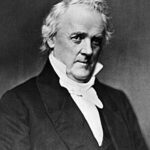The Economic Crisis Unfolds
President James Buchanan faced a severe economic downturn when the 1857 Financial Panic struck in August. The crisis began with the failure of the Ohio Life Insurance and Trust Company. Railroad speculation and overexpansion had created dangerous market conditions. 📊 Bank failures spread rapidly across the Northeast and Midwest regions.
Buchanan’s Restrained Response
Unlike previous administrations, Buchanan chose minimal federal intervention during the crisis. He believed market forces would naturally correct economic imbalances without government interference. Treasury Secretary Howell Cobb supported this laissez-faire approach to economic policy. ⚠️ Critics demanded immediate federal action to stimulate failing industries.
Strategic Non-Intervention Policy
Buchanan’s administration avoided massive federal spending programs or emergency monetary policies. Instead, they maintained fiscal discipline and allowed private markets to adjust. This approach reflected prevailing economic theories about natural market corrections. 💰 The president trusted that American enterprise would recover without artificial government stimulation.
Impact:
Swift Economic Recovery
The 1857 Financial Panic ended more quickly than previous economic crises in American history. By 1858, most sectors showed signs of renewed growth and stability. 📈 Manufacturing output rebounded faster than economists had predicted during the initial panic phase.
Validation of Limited Government
Buchanan’s restrained approach demonstrated the effectiveness of minimal federal economic intervention. The quick recovery supported arguments for allowing natural market mechanisms to function. Private businesses adapted and restructured without relying on government assistance programs. 🌍 International observers praised America’s resilient economic system and rapid recovery capabilities.
Long-term Economic Benefits
The crisis eliminated weak financial institutions and speculative excesses from the market system. Surviving banks emerged stronger with more conservative lending practices and improved risk management. 💰 The panic’s resolution without massive federal intervention set important precedents for future crisis management. Regional economies diversified and became less dependent on railroad speculation and overextended credit systems.
